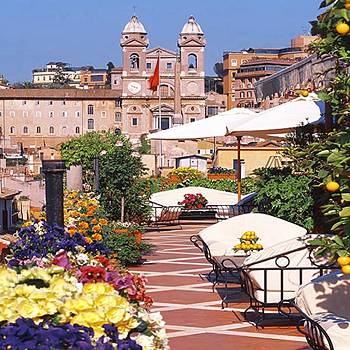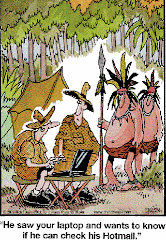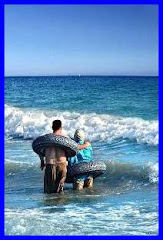
Some Shopping Malls and Centers
Akkad Mall
Nasr Road, Nasr City Tel: 2419-4247 Open: 11am-midnight. A spacious mall with two floors packed full with shops, a bowling centre, a video games arcade, two restaurants and a parking facility.
Arkadia Mall
Corniche El Nil, Downtown Tel: 2579-2082 Open: 11am-midnight. One of Cairo's well known malls. Across five floors there're shops, an amusement arcade for children (Fun Planet) and a food court with some ten restaurants. Famous brands like Adidas, Timberland are open as well as lesser known local ones. Parking available.
Bandar Mall
9 Palestine Rd, Maadi Tel: 2519-0455 Open: 11 am - midnightMore of an entertainment complex than a shopping one with three cinemas, a large bowling centre, a billiards place and several local and international food chains.
City Centre
Makram Ebeid St., Nasr City Tel: 2273-8855 Open: 10am-12:30pmA medium sized mall with five shopping levels, four cinemas and a few cafes / restaurants! Nice and elegant. shopping levels, four cinemas and a few cafes / restaurants! Nice and elegant.
City Centre (Carrefour)
Ring Road Maadi, Maadi Tel: 2520-4300/200 / Call centre: 16061 Open: 10 am-midnight / Fridays: 2pm-midnight Built outside the city periphery and famous for its hypermarket
Carrefour, this mall has a large number of boutiques and stores, and Magic Planet - an amusement arcade for children. It also holds a food court with six outlets and parking for 1,200 cars.
City Stars
2 Riyad At Hashed St.. Nasr City Tel: 2480-0500/ 55 open: 11am - 1pmAlready well known through out the country for boasting some of the top-notch international brands like Women's Secret, Morgan, Kookai, Red Earth, Mango and others; this mall with its brilliant shopping experience. Accessories and designer clothes on the first two floors, a Khan Al Khalili walk-through area, a Spinneys hypermarket, an international exhibition area, Magic Galaxy Park for kids, 16 wide screen cinemas, a wide range of coffee shops such as Cilantro, Cinnabon and Costa cafe. Not to mention a large food court which includes the usual suspects like Pizza Hut, McDonald's and Gellataria Roma as well as Chinese and Italian eateries.
Dandy Mall
Km 28, Cairo-Alex Desert Rd. Tel: 2539-2606 Call centre: 16061 Open: 0:30 am - 1 amThis shopping mall is set to become one of the city's largest. It features a 12-screen cinema complex, food court, department stores and shops, a gaming arcade and the largest branch of the Carrefour hypermarket in Egypt. There's also a petrol station for those driving onto Alexandria and the usually fast-food stops like KFC and McDonalds.
Degla Arcade
11 Hassan Sabri St., Zamalek Open: 10:30am-9pmThough small in size this shopping centre boasts some delightfully small but absolutelythe best boutiques in town for lingerie, jewelry, antiques, furniture and home accessories. There's also a hairdresser tucked into the building if you care for a touch-up.
El Horreya Mall
Al-Ahram St., Heliopolis Tel: 2452-1698 Open 10am-11:30pmA small mall boasting five levels of a variety of shops, two cinemas and two restaurants.First Mall35 Giza St., Giza Tel: 3571-7803 16 Open: 9am-midnight & 11am-11pm (winter) One of the classiest malls in Cairo. Three floors of the finest shops and international brands, including Bulgari, Villar, Damas, Polo, Carlo Jewelry. On the ground floor, 'La Gourmandise' offers the finest French pastries and Mediterranean cuisine where they also occasionally host fashion shows and events.
First Mall Shopping Mall
Florida MallSheikh AH Gad El Haq St., Masaken Sheraton, Heliopolis Tel: 268-4295 15005 Open: noon-midnightA small shopping mall with a few facilities. Five levels of shopping, two cinemas, a foodcourt with six restaurants and four cafes. Harris and Lipstick cafes are on the ground floor.
Galleria
Grand Hyatt Cairo, Corniche El Nil, Garden City Tel: 365-1234 Open: 10am-10pmThe Galleria offers the ultimate shopping and entertainment experience together with a stunning view of the Nile. Featuring 7 floors of retail outlets and entertainment facilities including cinemas, a multipurpose auditorium, boutiques and a food court. Some of the famous brands for your shopping pleasure are Mont Blanc, Chopard, Palait de Parfume, Baraka Optics, Felopateer, Mobaco and Concrete.
Genena Mall
Batarawi St., off Abbas El Akkad St., Nasr City Tel: 404-6261/3 14 Open: noon-midnight. One of the largest malls in Cairo, consisting of five floors of shopping boutiques for clothing, furniture, upholstery, shoes and perfumeries as well as several cinemas on the first and third floors. There is also a skating arena.
Maadi Grand Mall (MGM)
Road 250, Maadi Tel: 519-5380 Open: 11am-11pm (Thursday till midnight)Five floors of shopping, a large hall for billiards and video games, MGM cinema complex, and four restaurants.
Nile Hilton Annex
Corniche El Nil, Downtown Tel: 578-0444 Open: 9am-9pmA two-leveled mall with a wide variety of shops, a cafe, two restaurants, a billiard room, and an internet cafe. Parking available.
Ramses Hilton Annex
Corniche El Nil, Downtown Tel: 575-2025 Open: 10am-10pmA seven-floor mall with shops for clothes, jewelry, makeup, upholstery, shoes and music, three cinemas on the top floor, three restaurants, two billiard and snooker halls offering alcoholic beverages while you play, and a McDonald's. Can get pretty crowded during the summer. Parking available and is redeemable if you attend a movie.
Serag Mall
Atteya El-Sawalhy St., Nasr City Tel: 406-0555 Open: 11am-2amSpread across four floors of three different buildings, with a total of 400 shops. There are also five cinemas, 13 restaurants in addition to six chain restaurants outside the mall.
Tiba Mall
El Nasr Road, Nasr City Tel: 402-9072 / 6 Open: 7am-midnight. A small mall with two floors of shopping facilities, bowling and billiard halls, three restaurants, two cinemas, and parking.
Wonderland
Abbas El Akkad St., Nasr City Tel: 401-8834 Open: 11am-11pm. A relatively small shopping mall, but the cinemas and amusement arcade are quite favourable. Three floors of shopping, two cafes, a fast food outlet, bowling and billiard halls, and a Shoprite supermarket.
World Trade Centre (WTC)
191 Corniche El Nil, Downtown Tel: 580-4000 Open: l0 am-I0pmA food court and a bowling alley. (The cinema operates seasonally and severalshops have closed down - call before heading there.)
Yamama Centre
3 Taha Hussein St., Zamalek Tel: 736-1583/ 00/400 Open: 9am-11pmOne of the oldest shopping malls in Cairo with eight levels of shopping, a cafe, a pastry shop and a hair dresser. One of the city's best gyms, FDA, is also based inside the mall.
h.n.










































































































































